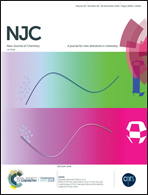Effective ways to enhance the photocatalytic activity of ZnO nanopowders: high crystalline degree, more oxygen vacancies, and preferential growth†
Abstract
The practical application of ZnO nanopowders (NPs) in purifying wastewater could be determined by some issues, such as low-cost and scalable preparation, high photocatalytic activity, antiphotocorrosion, and convenient recycling. In this contribution, a series of ZnO NPs were prepared in a scalable way in the 220 °C, 250 °C and 280 °C autoclaves, respectively. The structural, morphological and surface details of the samples were systematically examined by XRD, SEM, FT-IR, TEM, Raman, PL, and UV-visible spectroscopy. Along with the increase of the reaction temperature, the mean diameter of ZnO NPs increased in the range of 110–130 nm, and the color of the products was lighter, resulting in a smaller surface area but a stronger UV absorbance in the region of 200–400 nm. Moreover, the preferential growth along the (002) plane, the crystalline degree and the green emission intensity of ZnO 280 are more overt than those of ZnO 250 and ZnO 220. Some other parameters including stretching vibration and E2(high) mode of Zn–O bonding or diffraction peaks of ZnO 280 also shifted to lower wavenumbers or lower angles when compared to those of ZnO 220, revealing the existence of more oxygen vacancies in ZnO 280. As expected, ZnO 280 showed the best photocatalytic activity and antiphotocorrosion among the three samples in the degradation of rhodamine B due to the availability of abundant oxygen vacancies, preferential growth along the (002) direction and the high crystalline degree. This suggests that, along with the increase of the preparation temperature, the obtained ZnO nanopowders exhibit better photocatalytic activity. Therefore this work could provide a route to synthesize well crystalline ZnO nanopowders and open up an avenue for commercial applications of ZnO NPs in the treatment of organic wastewater.



 Please wait while we load your content...
Please wait while we load your content...